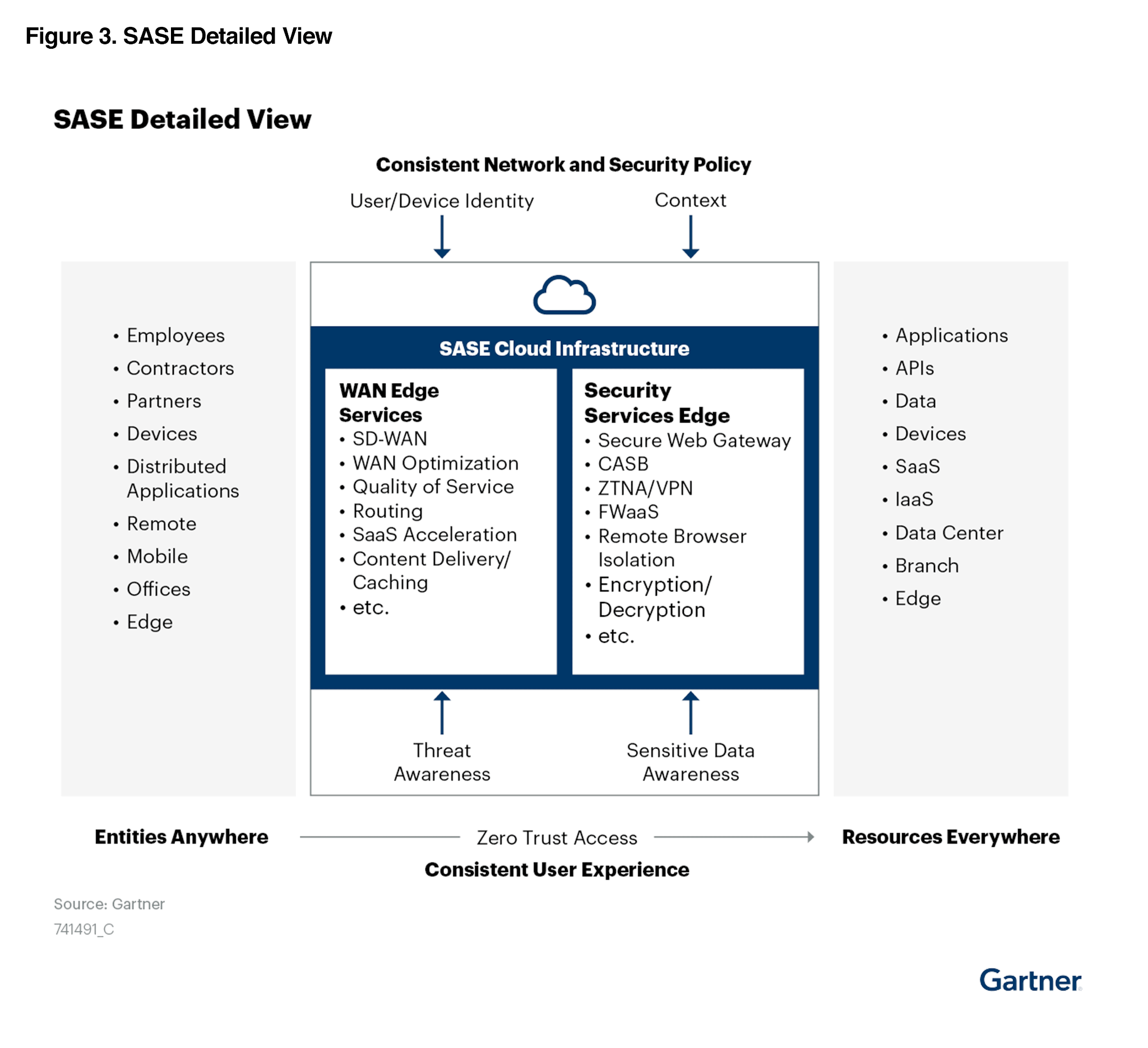Work happens everywhere, and apps live anywhere. Traditional network and security setups just don’t cut it anymore. This is where Secure Access Service Edge (SASE) comes in—a game-changing way to connect and secure your digital environment. Let’s break down what SASE is, why it’s generating so much buzz, and how a single-vendor approach could be exactly what your organization needs.
What is SASE?
At its core, SASE combines networking and security into one unified solution, designed to connect and protect users, devices, and locations—wherever they are. Think of it as an all-in-one, cloud-focused platform that simplifies and secures your operations.
A complete SASE solution blends network capabilities like Software-Defined WAN (SD-WAN) with cloud-based security tools known as Security Service Edge (SSE). These typically include:
- Secure Web Gateway (SWG)
- Cloud Access Security Broker (CASB)
- Zero Trust Network Access (ZTNA)
- Network Firewalling services
SASE supports various use cases, from securing branch offices and remote teams to safeguarding private applications and cloud services. It operates as a service, enabling zero trust access based on user identity, device type, and real-time context.

Why is SASE so popular?
Since SASE was defined in 2019, interest has skyrocketed. Traditional perimeter-based security is outdated, creating a messy patchwork of solutions, policies, and systems. SASE simplifies this complexity.
Organizations are turning to SASE to:
- Cut down on complexity by reducing the number of vendors they rely on.
- Enhance security for today’s hybrid workforce.
- Support business agility with a scalable, simplified approach.
The market agrees: SASE is on the rise, with predictions placing its value at nearly $15 billion by 2025 according to a Gartner report.
Why go single-vendor SASE?
While you can mix and match vendors or choose a managed service, single-vendor SASE stands out for its simplicity and integration. This approach unifies networking and security under one roof, with benefits such as:
- Full integration: All features work together seamlessly.
- Unified data and analytics: A single data lake for logs, events, and insights.
- Streamlined management: One platform, one console, one policy.
- Consistent security enforcement: Across all traffic and channels.
- Fast performance: Globally distributed points of presence (POPs) ensure your policies are enforced close to users.
Benefits of single-vendor SASE
Here’s why many organizations prefer single-vendor SASE:
- Stronger security: Fewer gaps, reduced attack surface, and consistent policies.
- Better efficiency: Faster deployment, fewer resources needed, and no overlapping tools.
- Improved user experience: Less latency, centralized logging, and simpler monitoring.
What to consider on the SASE Journey
Adopting SASE is a strategic shift, but it comes with its challenges:
- Breaking down silos: Networking and security teams must collaborate. Form a joint team to create a clear roadmap.
- Existing investments: Current hardware/software may still have value, slowing the transition.
- Skills gaps: Teams may require training to manage new policy-based systems.
- Vendor maturity: Single-vendor solutions vary in capability, so prioritize the features most important to your organization.
Why are teams loving SASE?
Here’s what users are saying:
“Since we implemented SASE at PRIVAL, managing policies has become so much easier. Everything is centralized, and I can handle it all from a single console.”
Ready to dive into SASE?
If you’re leading cloud and edge connectivity efforts, it’s time to engage your security team and start building a SASE strategy. Evaluate single-vendor SASE options alongside other approaches like managed solutions. Don’t forget to run a Proof of Concept with real users to see how it performs in your environment.
SASE isn’t just technology—it’s a smarter way to simplify, secure, and future-proof your network and security architecture in today’s distributed world.